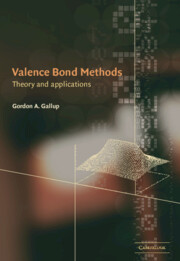Book contents
- Frontmatter
- Contents
- Preface
- List of abbreviations
- I Theory and two-electron systems
- 1 Introduction
- 2 H2 and localized orbitals
- 3 H2 and delocalized orbitals
- 4 Three electrons in doublet states
- 5 Advanced methods for larger molecules
- 6 Spatial symmetry
- 7 Varieties of VB treatments
- 8 The physics of ionic structures
- II Examples and interpretations
- References
- Index
2 - H2 and localized orbitals
Published online by Cambridge University Press: 13 August 2009
- Frontmatter
- Contents
- Preface
- List of abbreviations
- I Theory and two-electron systems
- 1 Introduction
- 2 H2 and localized orbitals
- 3 H2 and delocalized orbitals
- 4 Three electrons in doublet states
- 5 Advanced methods for larger molecules
- 6 Spatial symmetry
- 7 Varieties of VB treatments
- 8 The physics of ionic structures
- II Examples and interpretations
- References
- Index
Summary
The separation of spin and space variables
One of the pedagogically unfortunate aspects of quantum mechanics is the complexity that arises in the interaction of electron spin with the Pauli exclusion principle as soon as there are more than two electrons. In general, since the ESE does not even contain any spin operators, the total spin operator must commute with it, and, thus, the total spin of a system of any size is conserved at this level of approximation. The corresponding solution to the ESE must reflect this. In addition, the total electronic wave function must also be antisymmetric in the interchange of any pair of space-spin coordinates, and the interaction of these two requirements has a subtle influence on the energies that has no counterpart in classical systems.
The spin functions
When there are only two electrons the analysis is much simplified. Even quite elementary textbooks discuss two-electron systems. The simplicity is a consequence of the general nature of what is called the spin-degeneracy problem, which we describe in Chapters 4 and 5. For now we write the total solution for the ESE θ(1, 2), where the labels 1 and 2 refer to the coordinates (space and spin) of the two electrons. Since the ESE has no reference at all to spin, θ(1, 2) may be factored into separate spatial and spin functions.
- Type
- Chapter
- Information
- Valence Bond MethodsTheory and Applications, pp. 23 - 46Publisher: Cambridge University PressPrint publication year: 2002

